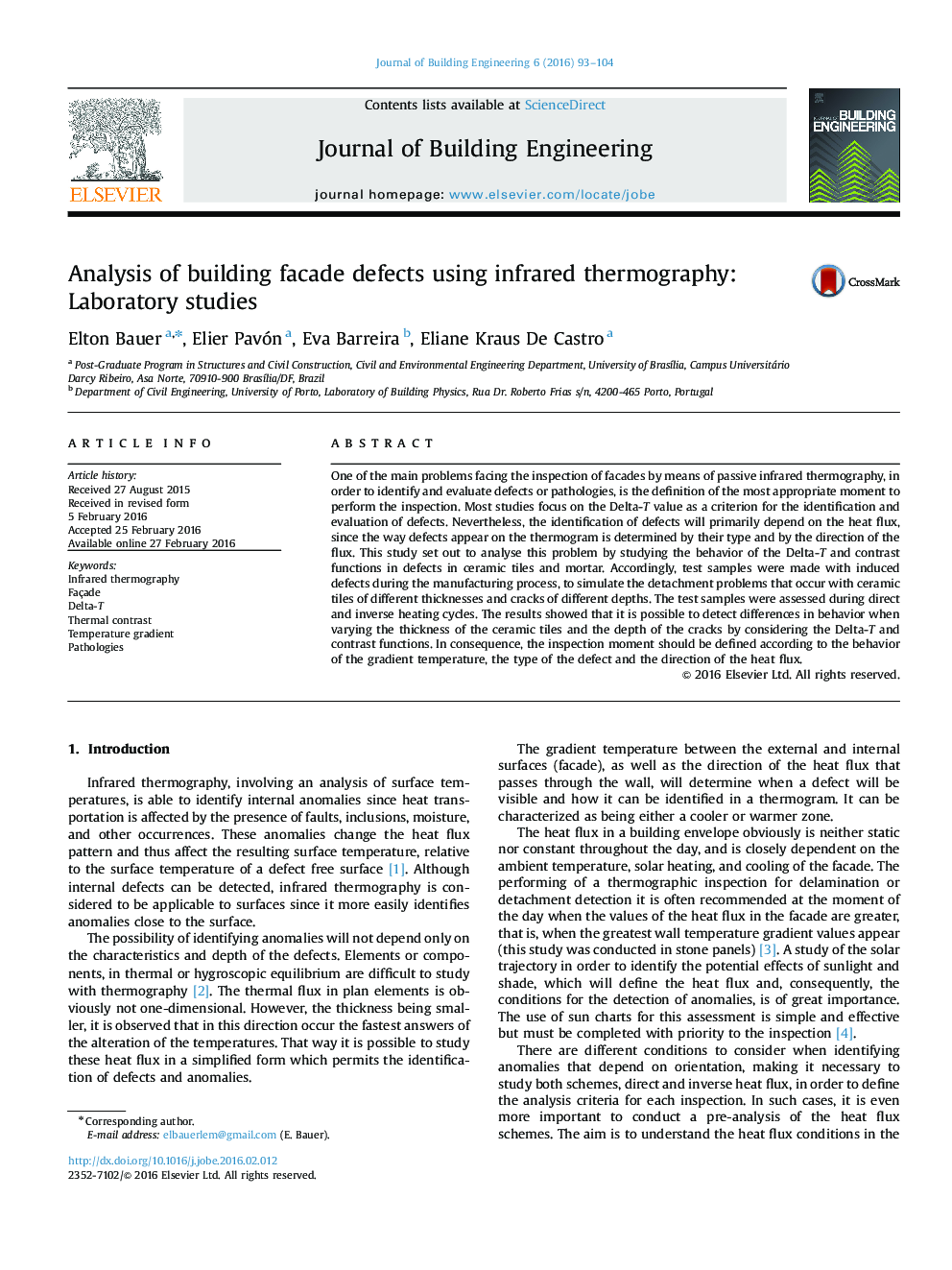| Article ID | Journal | Published Year | Pages | File Type |
|---|---|---|---|---|
| 283798 | Journal of Building Engineering | 2016 | 12 Pages |
•Criteria for identifying detachments and cracks with infrared thermography inspections.•Analysis of Delta-T and contrast functions to study facade defect (detachment and crack).•Influence of surface temperature and gradient temperatures behaviors on defect visibility.•Differentiated Delta-T behavior according to defect type and heat flux direction.•Use of direct and inverse heat flux in the assessment of detachments and cracks with infrared thermography.
One of the main problems facing the inspection of facades by means of passive infrared thermography, in order to identify and evaluate defects or pathologies, is the definition of the most appropriate moment to perform the inspection. Most studies focus on the Delta-T value as a criterion for the identification and evaluation of defects. Nevertheless, the identification of defects will primarily depend on the heat flux, since the way defects appear on the thermogram is determined by their type and by the direction of the flux. This study set out to analyse this problem by studying the behavior of the Delta-T and contrast functions in defects in ceramic tiles and mortar. Accordingly, test samples were made with induced defects during the manufacturing process, to simulate the detachment problems that occur with ceramic tiles of different thicknesses and cracks of different depths. The test samples were assessed during direct and inverse heating cycles. The results showed that it is possible to detect differences in behavior when varying the thickness of the ceramic tiles and the depth of the cracks by considering the Delta-T and contrast functions. In consequence, the inspection moment should be defined according to the behavior of the gradient temperature, the type of the defect and the direction of the heat flux.
